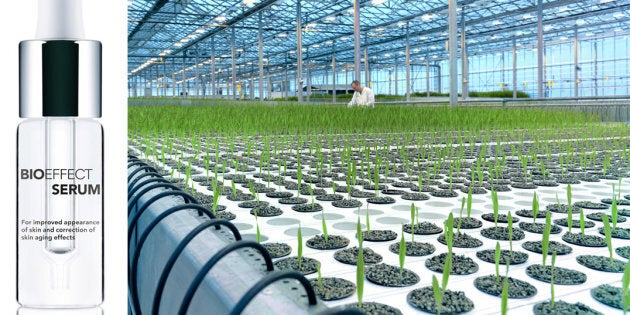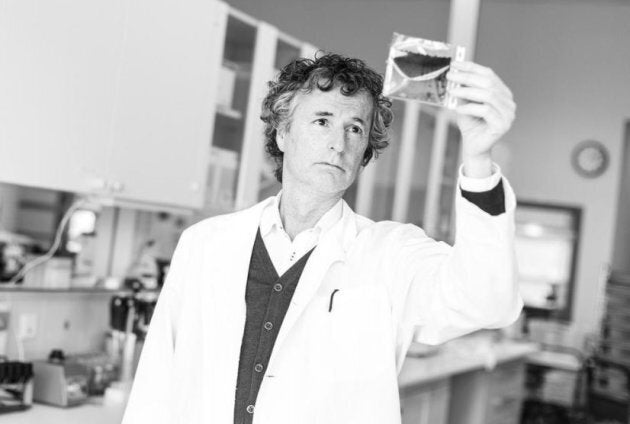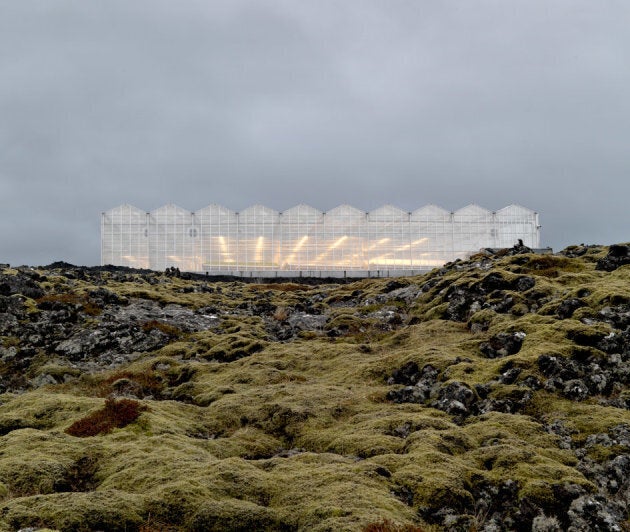
The world of anti-ageing skincare, and in fact the entire beauty industry, is a very lucrative game. It's a multi-billion dollar industry which relies on its consumers -- mostly women -- wanting to look brighter, better, younger.
It counts on the continual quest for eternal youth and it perpetuates the image by use of young models and aspirational imagery in its advertising. The industry is so cumbersome and daunting for the consumers that it's tricky to navigate and discern what actually works.
So, how can we separate the buzzwords and marketing hype from the truth? The answer is double-blind placebo studies. The answer is award-winning science. The answer is proof.
"We started this company in 2001. For the first few years we were actually developing a new production platform to produce human growth factors. So where we are today is something we didn't realise just a few years ago. Our intention wasn't to go into cosmetics or skincare, but here we are today," Dr Bjorn Orvar told HuffPost Australia.
The company he refers to is called Bioeffect, a science-based skincare brand born and produced in Iceland. Orvar is the Executive Vice President and Chief Scientific Officer of the brand and has a Ph.D in plant molecular genetics.

"We had developed this system to produce these human growth factors in plants. The idea was to sell these growth factors to stem cell researchers around the world. However, we saw that some of the growth factors we were already producing are actually quite important in the skin -- they do lots of amazing things in the skin," Orvar said.
From there the company divided its focus. It continued its work in stem cells for the medical industry, but also began to look into growth factors and their application when used in skincare.
"We thought there must be a companies around the world that are using these growth factors for skin care. We found that yes, there were some companies using them, but we thought we could do better."
So, what are 'growth factors'? For one, they are called 'cellular activators' in Australia due to regulatory requirements, though they are one in the same.
"These are tiny proteins that are native to our bodies. We have tens of different growth factors working in our skin, so this is something that is natural to our skin. These proteins are cellular messengers. Human cells communicate with each other -- they speak to each other using these growth factors. If your body wants to ask the neighbouring cell to do something, your body will produce a growth factor and throw it out, and it will then go and deliver the message and tell the neighbouring cell what it is supposed to do. Growth factors are most famous for being the communicators of stem cell development," Orvar told HuffPost Australia.
Bioeffect produce these growth factors, or cellular activators, by bio-engineering a plant-based replica of the naturally occurring human protein within a barley plant. They chose to use barley due to its closed biological system -- it is self-fertilising, meaning its pollen will not pollinate flowers on a different plant, which is often the concern of skeptics. Originally the plan was to sell these growth factors to the big cosmetic companies for them to use within their own formations. But there were problems.

"We introduced these growth factors in 2008 to the cosmetic world and we got really positive feedback. We had meetings with many of the major cosmetic companies, but we realised that it could be a difficult business for us because, first of all, at that time, these companies had limited knowledge about these products. And secondly, they were going to use these growth factors in their traditional formations which we knew would kill the activity of these proteins. So we knew that we could make a profit for a few years, but then everyone would realise that they don't do anything. And that has nothing to do with the growth factors -- it has to do with the formulation," Orvar said.
From that point it was clear to Orvar that they would need to formulate and produce their own skincare range, but the idea was met with resistance. 'Real' scientists don't often jump at the chance to create skincare, so Orvar has some convincing to do. The proof the scientists needed was in the results.
"Bioeffect launched in 2010 and it was the first product in the world that was based on plant biotechnology. 18 months after it launched, just by word of mouth, one out of three Icelandic women were using Bioeffect. Of course world of mouth is a dangerous thing, especially in a small society like Iceland. Word spreads fast and if it a bad product, everyone will know in a few days," Orvar said.
The brand launched with one hero product, the Bioeffect Serum. It's a clear liquid in a modest glass bottle that contains only seven ingredients. Two to four drops applied at night (with nothing on top) rejuvenates cells, creating skin density, suppleness and an increase in moisture which reduces fine line and wrinkles.

Interestingly, when you use the serum you'll notice that it doesn't really absorb into the skin, but rather sits on top. That's because the cellular activators within the product are actually too big to penetrate the skin.
"There are a lot of challenges when working with growth factors. One of them is the size. As you may know, we have a size limitations to cosmetic ingredients for penetration. The growth factors within the serum are 10 to 15 times too thick to penetrate the skin. This is where it gets hard for us to explain -- how can we use this in a cosmetic product because the size is too big? It will never penetrate," Orvar said.
Think of it like this: it's not the ingredients themselves that are working here, but the message they are sending. Think of the cellular activators as the CEO -- they tell the cells what to do. They send out the message to the cells, stimulating them to do what they used to do at full capacity before age and environmental aggressors decreased their ability. It's all about the message. Pretty nifty, huh?
Of course, there's other challenges when working with growth factors. Another is cost.
"If one gram of gold cost around 30 euros, then one gram of growth factor can cost between 80,000 and 200,000 euros. The purity of the growth factor is another challenge -- it is difficult to produce pure growth factor. It's the formulation -- you have to be very specific in how you formulate these growth factors," Orvar said.
The culmination of all of this is a potent, put fairly pricey product. The hero serum will set you back $195 here in Australia, but will last about six months. Bioeffect keep the costs down as much as possible with modest (but still slick) packaging, no celebrity faces or ambassadors, and little to no advertising.
The success of the brand can be accredited to the results. Aside from the double-blind placebo tests the brand itself conducts, the product has been independently tested many times, including by Dr Martina Kerscher, who is a world renowned expert in aesthetic dermatology and publishes many research papers and dermatological journals. Her split face study, which was conducted unbeknownst to the brand, found that skin thickness increased by 60 percent and density by more than 30 percent, which is essentially unheard of.
Another independent study was conducted by Dr Ronald Moy, professor of dermatology at the David Geffen School of Medicine at UCLA and president of the American Academy of Dermatology. On conclusion Dr. Moy said that the results of using the serum were the best he had seen during his 30 year career.
Bioeffect is the the longest-stocked and best selling skincare brand in the prestigious department store, Colette, in Paris. It outsells both tobacco and alcohol products on British Airways and counts Karl Lagerfeld and Mick Jagger among its many celebrity fans. Though probably the biggest feather in its cap is the fact that the science behind the use of cellular activators in human skin was awarded a Nobel Prize in Medicine.
In addition to the serum which is the hero product, Bioeffect also have an intensive 30 day treatment, body product, day serum, day cream for dry skin and one for combination skin, and a volcanic exfoliator within their range in Australia. Excitingly, a new serum is being released later in the year which in addition to the benefits of the original serum, tackles hyperpigmentation.
In Australia the term 'growth factor' it is referred to as 'cellular activators' due to regulatory requirements, although the formula is globally the same. This is reflected in different packaging, so you won't see the acronym EGF on the bottles or boxes in Australia.
It's also important to note that it should be applied to clean, bare skin and that no other product should be applied for 10 minutes afterward, so that the cellular activators can do their work. Applying something directly afterwards will stop the message. You really don't need anything on top of the serum at night, and can apply SPF and makeup on top of the day products after waiting the appropriate time.
Leigh Campbell traveled to Iceland as a guest of Bioeffect
ALSO ON HUFFPOST AUSTRALIA
Click below to subscribe to the Refresh podcast by HuffPost Australia on iTunes.
